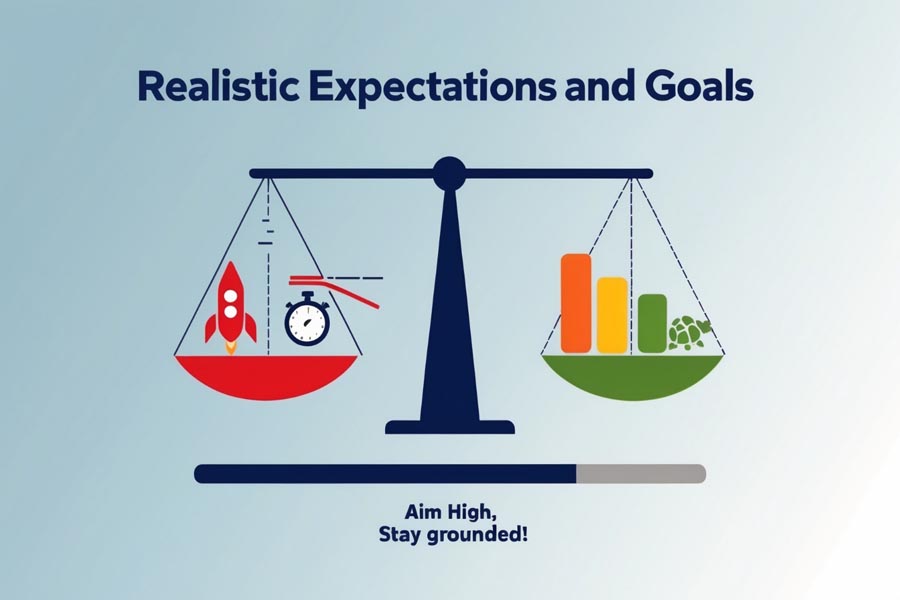In the fast-paced world of forex trading, achieving consistent profits is the holy grail for traders of all levels. One ambitious yet potentially attainable goal that many aspire to is making 500 pips a week. But what exactly does this mean, and is it truly possible? The direct answer is yes, achieving 500 pips a week in forex trading is possible, but it requires skill, strategy, and favorable market conditions. This comprehensive guide will delve into the strategies, challenges, and realities of aiming for 500 pips a week in forex trading, providing you with the knowledge and insights needed to elevate your trading game.

Whether you’re a seasoned trader or just starting your forex journey with an online forex broker, understanding the path to 500 pips a week can revolutionize your approach to the markets. We’ll explore how to select the right forex trading broker, develop winning strategies, and overcome the obstacles that stand between you and consistent high-pip profits.
Understanding the 500 Pips a Week Goal
What Are Pips in Forex Trading?
Before we dive into the strategies for achieving 500 pips a week, it’s crucial to understand what pips are and why they matter in forex trading. A pip, short for “percentage in point,” is the smallest price move that a given exchange rate can make. For most currency pairs, a pip is the fourth decimal place in the price quote.
For example:
- If the EUR/USD moves from 1.1000 to 1.1001, that’s a one pip movement.
- For pairs involving the Japanese Yen, a pip is the second decimal place. So, if USD/JPY moves from 110.00 to 110.01, that’s also a one pip movement.
The Significance of 500 Pips

Aiming for 500 pips a week is an ambitious target that requires a combination of skill, strategy, and market conditions. To put this into perspective:
- 500 pips in the EUR/USD pair is equivalent to a move from 1.1000 to 1.1500.
- This represents a significant price movement and potential profit opportunity.
However, it’s important to note that the monetary value of 500 pips can vary depending on your position size and the specific currency pair you’re trading.
Strategies to Achieve 500 Pips a Week

1. Develop a Robust Trading Plan
The foundation of any successful trading strategy, especially one aiming for 500 pips a week, is a well-thought-out trading plan. Your plan should include:
- Clear entry and exit criteria: Define precise conditions for entering and exiting trades. This might include specific technical indicators, price action patterns, or fundamental triggers.
- Risk management rules: Determine how much capital you’re willing to risk on each trade. A common rule is to risk no more than 1-2% of your account balance on a single trade.
- Time frames for analysis: Decide which time frames you’ll focus on for your trading decisions. A multi-timeframe approach is often beneficial, using higher time frames for trend identification and lower time frames for entry precision.
- Currency pairs to trade: Select a set of currency pairs that you’ll specialize in and understand deeply. Focus on pairs with high liquidity and volatility to increase your chances of capturing significant price movements.
- Trading sessions: Determine which forex trading sessions (Asian, European, North American) align best with your strategy and availability.
- Profit targets and stop-loss levels: Set clear profit targets and stop-loss levels for each trade. These should be based on your analysis of support and resistance levels, volatility, and risk-reward ratios.
A comprehensive trading plan acts as your roadmap to success, helping you stay disciplined and focused on your 500 pips a week goal. It removes emotional decision-making from your trading and provides a structured approach to achieving your targets.
Read More: 100 Pips a Week
2. Master Technical Analysis
Technical analysis is a crucial skill for any forex trader aiming for consistent profits. To work towards 500 pips a week, focus on:
- Trend identification: Learn to spot and trade with strong trends. Use tools like moving averages, trendlines, and the ADX (Average Directional Index) indicator to identify the strength and direction of trends.
- Support and resistance levels: Identify key price levels where currency pairs are likely to reverse or breakout. These levels can be found using previous highs and lows, Fibonacci retracements, and pivot points.
- Indicator proficiency: Master the use of indicators like Moving Averages, RSI (Relative Strength Index), and MACD (Moving Average Convergence Divergence) to confirm trade setups. Understand how to use these indicators in combination to increase the probability of successful trades.
- Chart patterns: Become adept at recognizing and trading chart patterns such as head and shoulders, double tops and bottoms, triangles, and flags. These patterns can provide high-probability trade setups with clear entry and exit points.
- Candlestick analysis: Learn to read candlestick patterns, which can provide valuable insights into market sentiment and potential price reversals. Patterns like engulfing candles, doji, and hammer formations can be particularly useful.
- Volume analysis: Incorporate volume indicators into your analysis to confirm the strength of price movements and potential reversals.
3. Stay Informed with Fundamental Analysis
While technical analysis is essential, fundamental factors often drive significant price movements in the forex market. Stay ahead by:
- Following economic calendars: Keep track of important economic releases and events. Pay particular attention to high-impact events like interest rate decisions, GDP reports, employment data, and inflation figures.
- Understanding central bank policies: Central bank decisions can create large price swings. Study the monetary policies of major central banks like the Federal Reserve, European Central Bank, Bank of Japan, and Bank of England. Understand their current stance and potential future actions.
- Analyzing geopolitical events: Global events can have a substantial impact on currency values. Stay informed about elections, trade agreements, conflicts, and other major geopolitical developments that could affect the currencies you trade.
- Monitoring market sentiment: Use tools like the Commitment of Traders (COT) report and sentiment indicators to gauge overall market positioning and potential trend reversals.
- Understanding correlations: Learn how different asset classes (stocks, commodities, bonds) correlate with currency pairs. This can provide additional context for your forex trading decisions.
- Conducting regular economic research: Stay up-to-date with economic trends, trade balances, and long-term economic forecasts for the countries whose currencies you’re trading.
4. Implement Advanced Risk Management
Aiming for 500 pips a week requires careful risk management to protect your capital and maximize profits:
- Use proper position sizing: Never risk more than 1-2% of your account on a single trade.
- Set appropriate stop losses: Protect yourself from unexpected market moves.
- Implement trailing stops: Lock in profits as trades move in your favor.
5. Leverage Multiple Time Frame Analysis
To capture 500 pips a week, you need to be able to spot both short-term opportunities and longer-term trends:
- Use higher time frames (daily, weekly) to identify overall market direction.
- Utilize lower time frames (1-hour, 15-minute) for precise entry and exit points.
- Align trades across multiple time frames for higher probability setups.
Challenges in Achieving 500 Pips a Week

While the goal of 500 pips a week is exciting, it’s important to understand the challenges:
1. Market Volatility
Forex markets can experience periods of low volatility, making it difficult to find enough price movement to achieve your target.
2. Emotional Control
The pressure of aiming for a high pip target can lead to overtrading or taking on excessive risk. Maintaining emotional discipline is crucial.
3. Inconsistent Market Conditions
Not every week will offer the same opportunities. Some weeks may present easier conditions for achieving 500 pips, while others may be more challenging.
4. Time Commitment
Consistently achieving 500 pips a week often requires a significant time investment in market analysis and trade management.
Realistic Expectations and Goals

While 500 pips a week is an ambitious target, it’s essential to approach it with realistic expectations:
- Start with smaller goals: Begin by aiming for 50-100 pips a week and gradually increase your target. This allows you to build confidence and refine your strategies without undue pressure.
- Focus on consistency: Prioritize consistent profitability over hitting a specific pip target every week. A trader who consistently makes 200-300 pips a week is likely to be more successful in the long run than one who occasionally hits 500 pips but suffers large losses in between.
- Measure performance over time: Look at your results over months or quarters rather than fixating on weekly performance. This broader perspective helps smooth out the inevitable ups and downs of trading.
- Understand the role of account size: Recognize that the feasibility of achieving 500 pips a week can depend on your account size. Smaller accounts may need to take on excessive risk to hit this target, which is not advisable.
- Consider your trading style: Different trading styles (day trading, swing trading, position trading) have different pip potential. Ensure your goal aligns with your preferred trading approach.
- Factor in trading costs: Remember that spread and commission costs can significantly impact your net pip gains. Factor these costs into your targets and calculations.
- Be prepared for drawdowns: Even successful traders experience losing streaks. Have a plan for managing drawdowns and adjusting your strategy if needed.
- Adapt to market conditions: Be flexible with your pip targets based on current market volatility and trading conditions. Some weeks may offer more opportunities than others.
- Focus on risk-adjusted returns: Instead of purely focusing on pip count, consider metrics like the Sharpe ratio or risk-reward ratio to gauge the quality of your trading performance.
- Continual education and improvement: Set goals for improving your trading skills and knowledge alongside your pip targets. Continuous learning is key to long-term success in forex trading.
Read More: 300 pips a week
Advanced Techniques for High-Pip Potential

To increase your chances of reaching the 500 pips a week milestone, consider incorporating these advanced techniques:
1. Breakout Trading
Breakout strategies can lead to significant pip movements:
- Identify key levels: Look for strong support and resistance areas.
- Use volume confirmation: Ensure breakouts are supported by increasing volume.
- Plan for fake-outs: Be prepared to exit quickly if a breakout fails.
2. News Trading
Major economic releases can create substantial price movements:
- Prepare for high-impact news events: Identify which releases are likely to cause volatility.
- Use proper risk management: News trading can be risky, so adjust your position size accordingly.
- Practice with a demo account: Perfect your news trading strategy before risking real capital.
3. Swing Trading
Swing trading can capture larger price movements over several days:
- Look for trend reversals: Identify potential turning points in the market.
- Use longer-term charts: Focus on daily and weekly time frames.
- Be patient: Allow trades time to develop and reach their full potential.
Read More: 50 Pips a Week
OpoFinance Services: Your Partner in Achieving 500 Pips a Week
As you embark on your journey to achieve 500 pips a week, choosing the right broker can make a significant difference in your success. OpoFinance, an ASIC-regulated forex broker, offers a range of services designed to support traders in reaching their ambitious goals:
- Advanced Trading Platforms: Access state-of-the-art trading technology to execute your strategies with precision.
- Competitive Spreads: Minimize trading costs to maximize your pip potential.
- Educational Resources: Enhance your trading knowledge with comprehensive learning materials.
- Professional Support: Get expert assistance when you need it most.

One of OpoFinance’s standout features is its innovative social trading service. This platform allows you to:
- Follow Top Traders: Learn from and copy the trades of successful forex professionals.
- Diversify Your Strategy: Incorporate multiple trading styles into your approach.
- Accelerate Your Learning Curve: Gain insights into advanced techniques while working towards your 500 pips a week goal.
By leveraging OpoFinance’s robust infrastructure and social trading capabilities, you can enhance your trading journey and work more effectively towards achieving consistent, high-pip profits in the forex market.
Conclusion
Achieving 500 pips a week in forex trading is an ambitious goal that requires dedication, skill, and a deep understanding of the markets. While it’s not impossible, it’s important to approach this target with realistic expectations and a solid foundation in trading fundamentals. By developing a robust trading plan, mastering technical and fundamental analysis, implementing advanced risk management techniques, and leveraging cutting-edge technology, you can work towards consistently high pip gains in your forex trading career.
Remember, the journey to 500 pips a week is not just about reaching a number—it’s about becoming a more disciplined, knowledgeable, and successful trader overall. Stay committed to continuous learning, adapt your strategies as market conditions change, and always prioritize risk management. With persistence and the right approach, you can move closer to your goal of 500 pips a week and potentially transform your forex trading success.
How much money do I need to start trading to aim for 500 pips a week?
The capital required to aim for 500 pips a week can vary significantly depending on your trading style, risk management, and the currency pairs you trade. Generally, it’s advisable to have a well-funded account to withstand market fluctuations and avoid over-leveraging. A minimum of $5,000 to $10,000 is often recommended for serious traders aiming for high pip targets. However, it’s crucial to remember that the focus should be on percentage gains rather than absolute pip counts, as the monetary value of pips varies with account size and traded volume.
Is it better to focus on a single currency pair or multiple pairs when aiming for 500 pips a week?
The decision to focus on a single currency pair or multiple pairs when targeting 500 pips a week depends on your trading style and expertise. Focusing on a single pair allows you to develop deep expertise in its behavior and patterns, potentially leading to more accurate predictions. However, trading multiple pairs can provide more opportunities and help diversify risk. For beginners, it’s often recommended to start with 1-3 major pairs and expand as you gain experience. Advanced traders might monitor 5-10 pairs to maximize opportunities while still maintaining focus.
How do economic events affect the potential to reach 500 pips in a week?
Economic events can have a significant impact on your ability to reach 500 pips in a week. Major economic releases, central bank announcements, and geopolitical events can create substantial market volatility, potentially leading to large price movements. These events can present opportunities for quick, high-pip gains, but they also come with increased risk. Successful traders often incorporate economic calendars into their strategy, planning trades around high-impact events. However, it’s crucial to approach news trading with caution, as the increased volatility can also lead to rapid losses if not managed properly.







